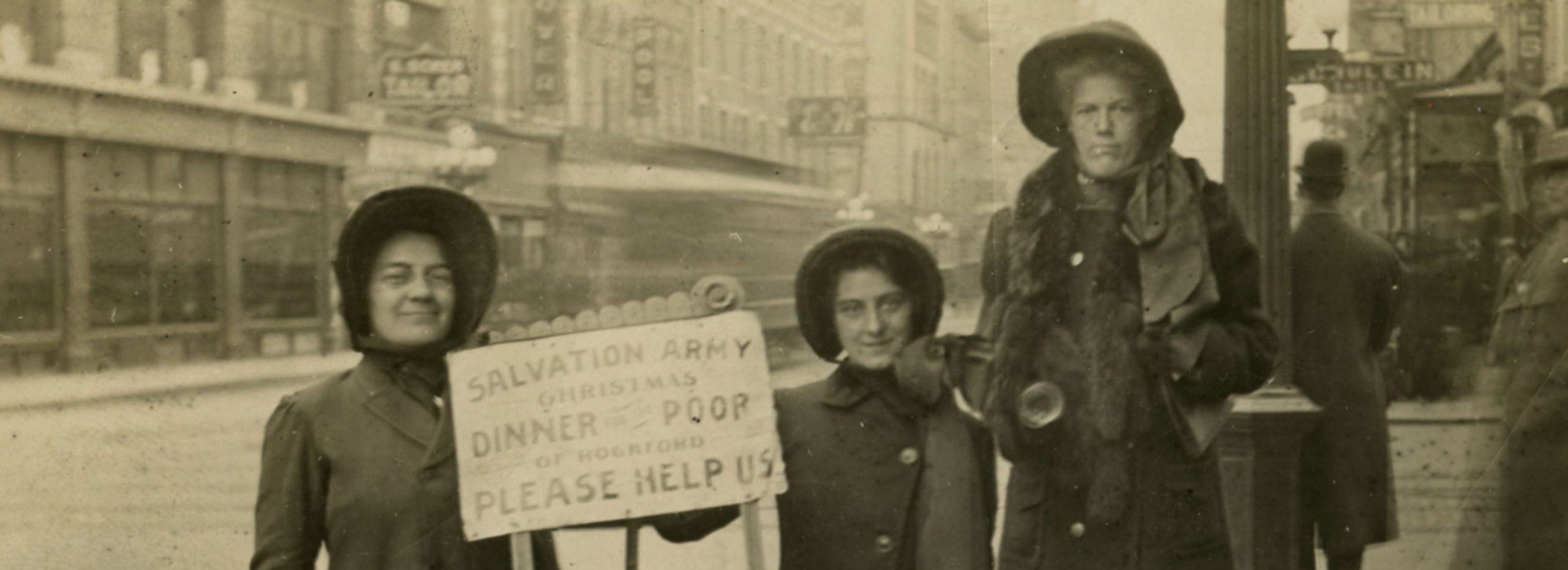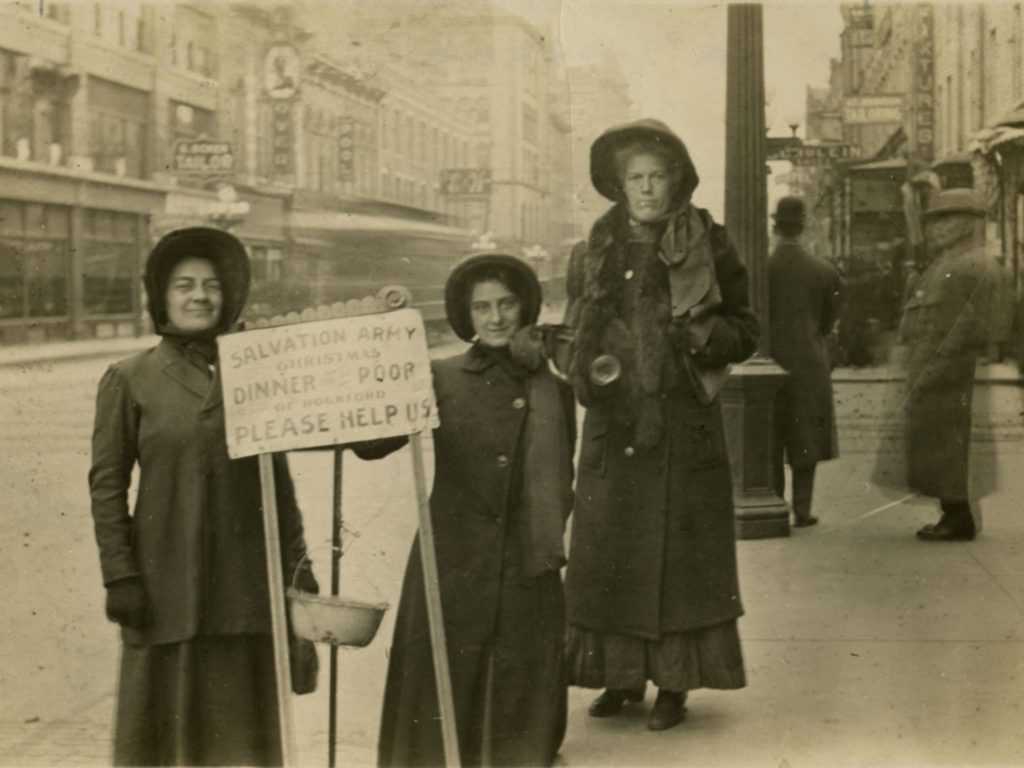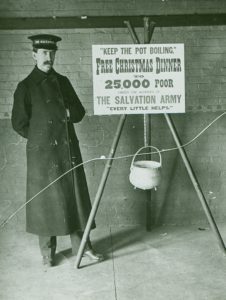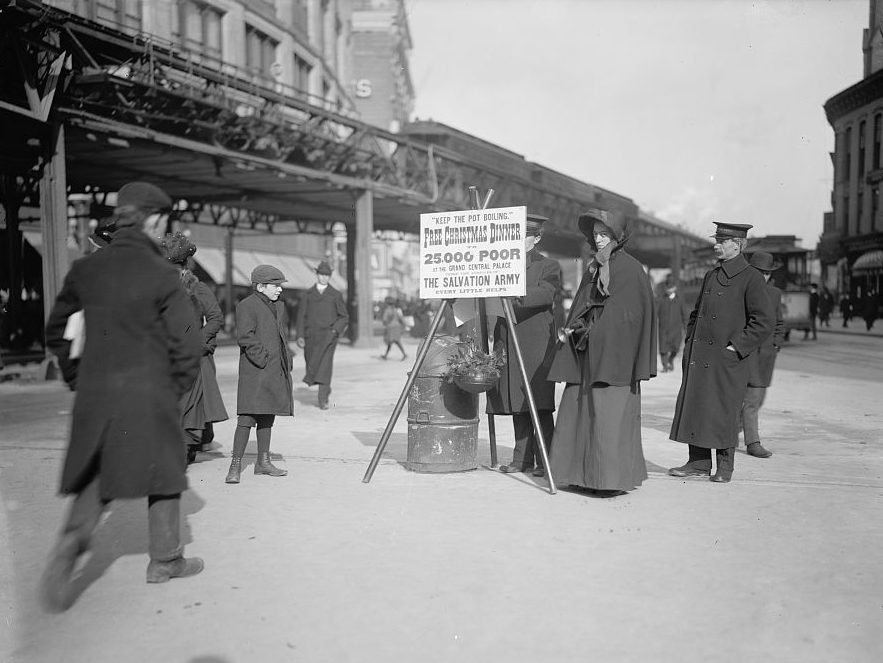
Kettles, Kettles Everywhere
The next year, the Captains McFee and their fellow San Francisco Salvationists wanted to repeat their Christmas Day dinner program. By early December, the kettle was once again accepting donations at the ferry depot.
On Christmas Day 1892, a Salvation Army soup kitchen called the Lifeboat Station opened. Joseph was the commanding officer. The Lifeboat Station, located in the former San Francisco #2 corps building at the corner of Sacramento and Kearny Streets, served over 1,400 on its opening day. The meal was advertised in the paper for poor men but some women and children also attended.
In 1893, the Army partnered with The San Francisco Examiner, local churches, and other citizens to raise funds and supplies for his annual Christmas dinner for women and children. Their goal was to feed 4,000 poor women and children. The meal included the distribution of coats, clothing and shoes, food, and wood and coal for heating homes. Santa Claus was there to give toys to the children. A Christmas tree brought extra joy to the annual Christmas meal. The dinner was such a success that it received national secular news coverage.
The technique of using a kettle to collect donations was beginning to catch on. In 1893, the Stockton, CA Evening Mail noted that:
“The Salvation Army has erected its yearly ‘soup kettle’ at the southwest corner of the Courthouse block. It is supported on a tripod and covered with wire netting, and the transparency above announces that the money collected will be used for giving a Christmas dinner to the poor of Stockton.”
The use of the word “yearly” implies the kettle was used in 1892 or earlier.
In 1895 two Sacramento, CA corps placed kettles outside their corps building to collect donations for their Christmas dinner. The sign above this kettle may feature the first use of a campaign slogan. It read: “Keep the Pot Boiling! Christmas Dinner for 1000 Poor, And Clothing for Children. No Discrimination in Color, Creed, or Nationality.” By the following year, the Army had positioned multiple kettles around the city with female Salvationists stationed at each kettle stand.
Other corps across the country promoted their upcoming Christmas dinners in the local newspapers. These types of notices included information as to where donations of money and clothing could be made. However, these do not appear to have yet employed a kettle.
The success of California’s kettle fundraising program was replicated by officers who brought this technique with them from California to new appointments in Boston, Buffalo, NY, and Chicago.
In 1898 New York was blanketed by kettles. The Times Union of Brooklyn, NY reported that twenty kettles were deployed around Brooklyn, and eighty were located in Manhattan. The placard on top of the kettle stand urged shoppers to “Keep the Pot Boiling.”





